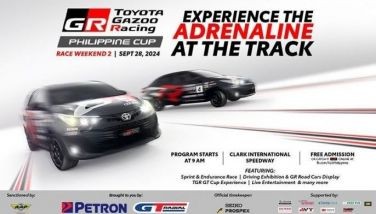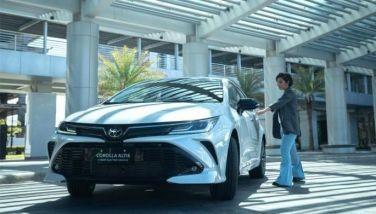Testing times in F1
Perhaps the worst news in Formula 1 now, with the exception of Renault F1 driver Robert Kubica’s horrific career-threatening injuries in a rallying accident early last month, was the cancellation of the March 13-scheduled season-opening Bahrain Grand Prix (due to that country’s ongoing political turmoil) – which means that we’ll have to wait two more weeks before the 2011 Grand Prix season starts in Melbourne on the 27th.
That should be pretty good news for most of the F1 teams, though, as it gives them more time to improve and develop their cars. (But probably not for the drivers, who are very likely as eager as the rest of us to see those five red lights in Albert Park go out to signal the start of the Grand Prix season.)
As it is, the teams will be trucking their cars to Barcelona instead of Bahrain, for more pre-season testing. I’ve driven in the Circuit de Catalunya once, and it justifiably stands as the most demanding test track there is. Not only does it give a very good test of a car’s performance, it also almost always has great weather. (The rain in Spain really does stay mainly in the plain!)
So with all the testing that’s been going on, surely what everyone wants to know is: Who’s fast and who’s not?
Well, one of the problems with reading into the testing results so far is that there are more variables than you can shake a pitlane lollipop stick at. Drivers could be using soft tires or hard tires. They could have anything from full tanks to almost zero levels of fuel on board (some teams purposely let cars run dry on the track to see how the engine and electronics will behave as the fuel goes low). Then again there is also the question of whether the cars are using KERS or the adjustable rear wing when they are setting their lap times.
And if that isn’t complicated enough, the teams are all at different stages of development, so that one team might be half a second faster than its closest competitor one week, but a raft of new aero parts for the slower team might level that out in the next testing session.
Nevertheless, the engineers have sophisticated algorithms and other data gathering systems which allow them to analyse speeds and even the sounds of an engine and crunch numbers on every lap – so they can pretty much guesstimate what others are doing.
From the various tests so far, the Red Bulls are still ahead of the Ferraris and those two teams have a cushion of margin from the rest. On long runs (i.e. simulating a race distance), there isn’t much of a gap between them; even if it was in qualifying where the Red Bull had the huge advantage last year.
McLaren seems to be struggling with speed and reliability, but it’s still early days and the boys from Woking are known for wringing the last bit of speed from their cars even if it’s late in the season.
Mercedes is a bit behind as well, but the engineers are saying that they’re making progress and believe that they will make a big gain with the new aero parts they have planned for the final test.
As to whether 7-time world champion Michael Schumacher is warming up to the new Pirellis (or should it be the other way around?), it’s still too early to tell. He did voice out positive initial feedback with the Italian-made tires at the start of pre-season testing; but with teammate Nico Rosberg posting faster lap times – yet again – in the last test, it’ll be an uphill battle for the legendary German to prove to his detractors that he still hasn’t lost his famed speed.
The Lotus-Renault looks stunning with its black-and-gold livery reminiscent of the Mario Andretti Lotus of the ‘70s. Hopefully the loss of the recuperating Kubica will be made up for by the substitution of a revitalized Nick Heidfeld. The car has been lapping impressively in testing and should be more competitive with the likes of Mercedes and McLaren this year.
The midpack promises more excitement with Sauber, Williams, and Toro Rosso making significant gains. Force India should be equally revitalized, especially with the maiden Indian Grand Prix happening later in the year. If they get their KERS technology and strategy right, expect them to make a few surprises this year. I just wish they’d get their old driver Giancarlo Fisichella back from being Ferrari test driver and slip him into in a race car where he belongs.
Team Lotus – the “other” Lotus team – also looks set to spring a surprise or two, what with a Renault engine and a Red Bull gearbox. That’s one potent combination! Now let’s see if their aerodynamicists are any good…
Last year’s backmarkers Virgin and Hispania Racing Team, meanwhile, have a problem. There is a new rule this year that requires cars to be within 107% of the pole position lap time to qualify for the race – which means that at a track like Melbourne, it means being within six seconds or so off the pole time. That may sound like a huge margin, but with a poorly performing car against an on-song Red Bull-Vettel, they might not just end up at the tail end of the grid, they might end up as a DNQ (did not qualify). Yikes!
- Latest






























